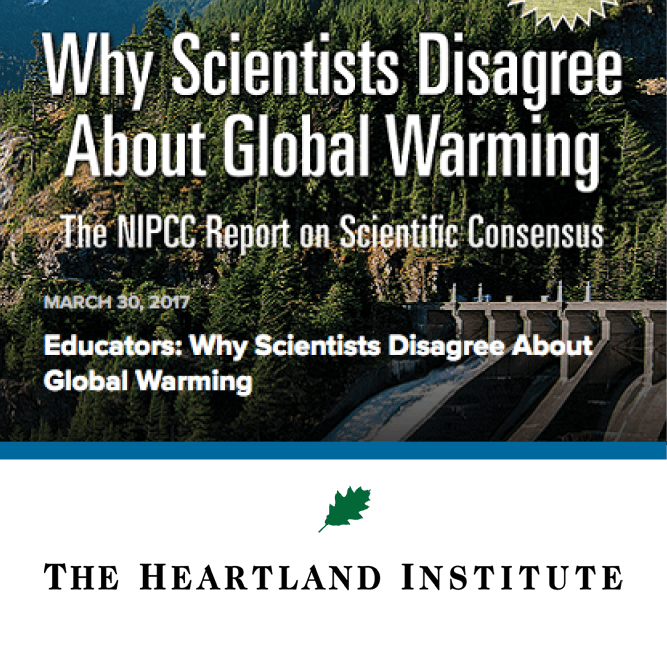

REVIEW
CLAIM: Melting of Arctic sea ice and polar icecaps is not occurring at ‘unnatural’ rates and does not constitute evidence of a human impact on the climate.
Jan Lenaerts, Assistant Professor, University of Colorado, Boulder:
This is a mostly false statement. The correct part is the East Antarctic ice sheet is close to mass balance1, 2 and that the recent changes in Antarctic sea ice cover are explained by natural variability3, 4.
The statement is definitely false for Arctic sea ice, which is decreasing dramatically since the 1990s as a response to human greenhouse gas emissions. In fact, there is a direct and linear relation between CO2 emitted and sea ice decline: each metric ton CO2 emitted leads to a 3 m2 loss of Arctic sea ice5 . The current loss of sea ice falls outside of natural variability and has been unprecedented in at least the last 1,450 years6.
West Antarctic mass loss has been rapidly increasing since the 1990s2. Glacial retreat in the Amundsen Sea region, the main driver of this mass loss, appears to have started already in the early 20th century7. The rate of retreat is rapid and widespread8, with no mechanism for future stabilisation9.
Current ice sheet mass loss contributes significantly (almost 40%10) to observed 21st century sea level rise. Until 2016, Arctic sea ice loss has dominated over slight Antarctic sea ice gain. In 2016 and 2017, Antarctic sea ice has been in decline as well, and reasons for this are currently under study.
- 1- Shepherd et al (2012) A Reconciled Estimate of Ice-Sheet Mass Balance, Science
- 2- Gardner et al (2017) Increased West Antarctic ice discharge and East Antarctic stability over the last seven years, The Cryosphere Discussions
- 3- Turner et al (2016) Antarctic sea ice increase consistent with intrinsic variability of the Amundsen Sea Low, Climate Dynamics
- 4- Meehl et al (2016) Antarctic sea-ice expansion between 2000 and 2014 driven by tropical Pacific decadal climate variability, Nature Geoscience
- 5- Notz and Stroeve (2016) Observed Arctic sea-ice loss directly follows anthropogenic CO2 emission, Science
- 6- Kinnard et al (2011) Reconstructed changes in Arctic sea ice over the past 1,450 years, Nature
- 7- Smith et al (2017) Sub-ice-shelf sediments record history of twentieth-century retreat of Pine Island Glacier, Nature
- 8- Rignot et al (2014) Widespread, rapid grounding line retreat of Pine Island, Thwaites, Smith, and Kohler glaciers, West Antarctica, from 1992 to 2011, Geophysical Research Letters
- 9- Joughin et al (2014) Marine ice sheet collapse potentially under way for the Thwaites Glacier Basin, West Antarctica, Science
- 10- Rietbroek et al (2016) Revisiting the contemporary sea-level budget on global and regional scales, PNAS
- Mouginot et al (2014) Sustained increase in ice discharge from the Amundsen Sea Embayment, West Antarctica, from 1973 to 2013, Geophysical Research Letters
Jeremy Fyke, Postdoctoral researcher, Los Alamos National Laboratory:
This is demonstrably false, and indicates an ignorance of a large body of existing and easy-to-access literature, based on a wide range of independent direct observations and modeling. Both ice sheets (Greenland and Antarctica) are exhibiting mass loss, including collapse of features such as large ice shelves that have been present for millennia. Negative Arctic sea ice trends are clearly emerging from the background of natural variability. Antarctic sea ice, just this year, exhibited an unprecedented decrease, well outside of established recent natural variability windows.
Peter deMenocal, Professor, Lamont-Doherty Earth Observatory, Columbia University, and Director, Center for Climate and Life:
The Arctic is a canary in the coal mine, and the rapid changes there reflect the telltale polar amplification signature of increased greenhouse gas forcing. The rates of Arctic sea ice retreat are unprecedented compared to earlier decades and this is one of the fastest moving systems on the planet. Both polar ice caps are losing mass as shown by GRACE satellite data.
François Massonnet, Postdoctoral Research Fellow, Université catholique de Louvain:
A recent study* suggests that as much as 60 % of the observed loss in late-summer Arctic sea ice extent could have been caused by changes in atmospheric circulation patterns – i.e., natural causes. Natural factors can only explain a part of the observed losses, and multiple studies (reviewed in the latest IPCC report) have shown that it is not possible to explain the observed losses without considering non-natural factors.
- Ding et al (2017) Influence of high-latitude atmospheric circulation changes on summertime Arctic sea ice. Nature Climate Change
Jennifer Francis, Senior Scientist, Woods Hole Research Center:
The extent of Arctic sea ice is far lower than at any time in the past 1450 years (Kinnard et al 2011), and there is no viable explanation for its disappearance other than the rapid increase in heat-trapping greenhouse gases owing to human activities.
- Kinnard et al (2011) Reconstructed changes in Arctic sea ice over the past 1,450 years, Nature


